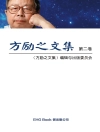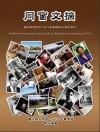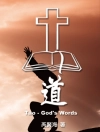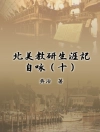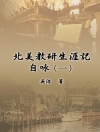Husband and wife William and Ellen Craft’s break from slavery in 1848 was perhaps the most extraordinary in American history. Numerous newspaper reports in the United States and abroad told of how the two — fair-skinned Ellen disguised as a white slave master and William posing as her servant — negotiated heart-pounding brushes with discovery while fleeing Macon, Georgia, for Philadelphia and eventually Boston.
No account, though, conveyed the ingenuity, daring, good fortune, and love that characterized their flight for freedom better than the couple’s own version, published in 1860, a remarkable authorial accomplishment only twelve years beyond illiteracy. Now their stirring first-person narrative and Richard Blackett’s excellent interpretive pieces are brought together in one volume to tell the complete story of the Crafts.
Ellen Craft (1826–1891) and William Craft (1824–1900) were slaves from Macon, Georgia in the United States who escaped to the North in December 1848 by traveling openly by train and steamboat, arriving in Philadelphia on Christmas Day. She passed as a white male planter and he as her personal servant. Their daring escape was widely publicized, making them among the most famous of fugitive slaves. Abolitionists featured them in public lectures to gain support in the struggle to end the institution.
As the light-skinned quadroon daughter of a mulatto slave and her white master, Ellen Craft used her appearance to pass as a white man, dressed in male clothing, during their escape.
As prominent fugitives, they were threatened by slave catchers in Boston after passage of the Fugitive Slave Act of 1850, so the Crafts emigrated to England. They lived there for nearly two decades and reared five children. The Crafts lectured publicly about their escape. In 1860 they published a written account, Running a Thousand Miles for Freedom; Or, The Escape of William and Ellen Craft from Slavery. One of the most compelling of the many slave narratives published before the American Civil War, their book reached wide audiences in Great Britain and the United States. After their return to the US in 1868, the Crafts opened an agricultural school for freedmen’s children in Georgia.
THE BOOK:
Their book provides a unique view of race, gender, and class in the 19th century. It offers examples of racial passing, cross-dressing, and middle-class ‘performance’ in a society in which each of these boundaries was thought to be distinct and stable. While originally published with only William’s name as author, twentieth-century and more recent scholarship has re-evaluated Ellen’s likely contribution, noting the inclusion of material about Sally Miller and other women slaves.
Their escape, and particularly Ellen’s disguise, which played on so many layers of appearance and identity, showed the interlocking nature of race, gender, and class. Ellen had to ‘perform’ successfully in all three arenas simultaneously for the couple to travel undetected. Since only William’s narrative voice tells their joint story in the book, critics say it is suggestive of how difficult it was for a black woman to find a public voice, although she was bold in action. Brusky says that, in the way that she used wrappings to ‘muffle’ her during the escape to avoid conversation, Ellen in the book is presented through the filter of William’s perspective.
Historians and readers cannot evaluate how much Ellen contributed to the recounting of their story, but audiences appreciated seeing the young woman who had been so daring. Since they appeared over a period of 10 years, as William recounted their escape, they could respond to audiences’ reactions to Ellen in person and to hearing of her actions. It is likely their published account reflects her influence.
Ellen Craft & William Craft
Running a Thousand Miles for Freedom [EPUB ebook]
Running a Thousand Miles for Freedom [EPUB ebook]
购买此电子书可免费获赠一本!
语言 英语 ● 格式 EPUB ● ISBN 9788826482323 ● 文件大小 0.3 MB ● 出版者 BertaBooks ● 发布时间 2017 ● 下载 24 个月 ● 货币 EUR ● ID 5265233 ● 复制保护 无



